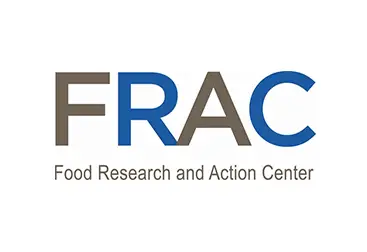
Not only did the number of low-income children eating summer meals grow, but there also was progress in reaching a higher proportion of children in need. In its annual report, Hunger Doesn’t Take a Vacation, FRAC measures the success of Summer Nutrition Programs at the national and state levels by comparing the number of children receiving summer meals to the number of low-income children receiving school lunch during the regular school year. The programs grew to serve 15.1 children for every 100 low-income children who participated in school lunch during the 2012-2013 school year, a modest increase from the 14.3:100 served in the 2011-2012 school year.
The Summer Nutrition Programs, which include the Summer Food Service Program and the National School Lunch Program over the summer period, provide free meals at participating summer sites at schools, parks, other public agencies, and nonprofits for children under 18.
A good deal of the growth in summer food participation can be attributed to the leadership of the U.S. Department of Agriculture (USDA), which made increasing the numbers of summer meals served a top priority for the agency. USDA Secretary Tom Vilsack set the goal of providing five million more meals in the summer of 2013; the results show that USDA surpassed its goal, serving seven million more meals in 2013 than in 2012. USDA achieved these results by partnering with national organizations to increase the number of sponsors and sites providing summer meals and to increase the number of children who participated; and by undertaking aggressive steps to provide hands-on assistance to states, including targeted help in five states (Arkansas, California, Colorado, Rhode Island, and Virginia). This summer, USDA is focusing efforts in six states (Alabama, Illinois, Mississippi, Missouri, Nevada, and Texas), and launched “SummerFoodRocks,” a free web-based application that features a site locator and search tool, and works on devices such as iPads, iPhones, Blackberrys, and Androids.
Still, the Summer Nutrition Programs must be further improved and strengthened to enable them to serve food to even more children in need. Looking ahead to the upcoming Child Nutrition Reauthorization, FRAC noted that Congress should make some key investments in the program, most notably looking at ways to help more areas qualify for the Summer Nutrition Programs-making the rules conform to those in other programs and easing administrative requirements.
Increasing participation means more nutritious food for hungry children, but it also means more federal funding for communities. If every state had reached the goal of 40 children participating in Summer Nutrition in July 2013 for every 100 receiving free or reduced-price lunch during the 2012-2013 school year, an additional 4.8 million children would have been fed each day, and states would have collected an additional $365 million in child nutrition funding in July alone.
About the report: The Food Research and Action Center’s annual summer report, Hunger Doesn’t Take a Vacation, gives data for all states and looks at national trends. The report measures participation in the Summer Nutrition Programs by comparing the number of children receiving summer meals to the number of children receiving school lunch during the regular school year. The regular school year is used as a measure because such a high proportion of low-income children eat school lunch on regular school days. FRAC measures national summer participation during the month of July, when typically all children are out of school throughout the month and lose access to regular year school meals. The report is available online at www.frac.org.
Posted by Meghan Ogilvie
6/8/14
